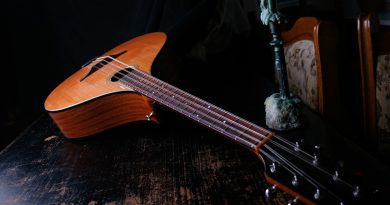Mastering the Fretboard: Tips for Increasing Guitar Speed
Mastering the Fretboard: Tips for Increasing Guitar Speed
As a guitarist, one of the key skills you need to develop is mastering the fretboard. Being able to navigate the fretboard efficiently and accurately is essential for playing fast and fluidly. In this article, we will explore some tips and techniques for increasing your guitar speed by mastering the fretboard.
Understanding the Fretboard Layout
The first step in mastering the fretboard is understanding its layout. The fretboard is divided into frets, with each fret representing a specific note. The strings of the guitar are also tuned to specific pitches, with the standard tuning being EADGBE from the lowest string to the highest.
One way to familiarize yourself with the fretboard layout is by practicing scales. Scales are a fundamental part of guitar playing and can help you become more familiar with the notes on the fretboard. Practice playing scales up and down the fretboard, paying close attention to the positions of the notes and how they relate to each other.
Memorizing Note Names
Another crucial aspect of mastering the fretboard is memorizing the note names on each string. This will help you navigate the fretboard more efficiently and accurately. Start by memorizing the notes on the low E string and work your way up to the high E string. You can use mnemonic devices or visual aids to help you remember the note names.
One helpful technique for learning the note names is to practice playing the notes in sequence on each string. For example, start by playing the open string, then the first fret, second fret, and so on. This will help you associate the notes with their positions on the fretboard and improve your overall fretboard awareness.
Developing Finger Dexterity
One of the key factors in increasing your guitar speed is developing finger dexterity. As you become more familiar with the fretboard, practice exercises that focus on strengthening and stretching your fingers. This will help you play complex passages more easily and with greater speed.
One exercise that can help improve finger dexterity is the chromatic scale. Start by playing each note on one string, moving up and down the fretboard. Focus on keeping your fingers close to the fretboard and using the correct finger placement. As you become more comfortable with this exercise, try increasing the speed at which you play each note.
Improving Picking Technique
Another essential aspect of increasing guitar speed is improving your picking technique. The way you hold the pick and the angle at which you strike the strings can greatly impact your speed and accuracy. Experiment with different picking techniques to find the one that works best for you.
One popular picking technique is alternate picking, where you alternate between downstrokes and upstrokes. This can help you play faster passages more smoothly and efficiently. Practice exercises that focus on alternate picking, such as scales or arpeggios, to improve your picking speed.
Using Metronome to Increase Speed
A metronome is a valuable tool for increasing your guitar speed. Start by practicing scales or exercises at a slow tempo, gradually increasing the speed as you become more comfortable. The metronome will help you stay on track and ensure that you are playing in time.
Focus on playing each note cleanly and accurately, rather than rushing through the passage. This will help you build muscle memory and increase your overall speed over time. Remember to practice consistently and set realistic goals for yourself to track your progress.
Incorporating Hammer-ons and Pull-offs
Hammer-ons and pull-offs are techniques that can help you increase your guitar speed and fluidity. A hammer-on is when you use a finger to sound a note without picking it, while a pull-off is when you sound a note by releasing a finger. Practice incorporating these techniques into your playing to create faster and more dynamic passages.
Start by practicing simple hammer-on and pull-off exercises, such as trills or legato phrases. Focus on using minimal movement and maintaining a smooth and even sound. As you become more comfortable with these techniques, try incorporating them into your solos or improvisations for a more expressive playing style.
Conclusion
Mastering the fretboard is essential for increasing your guitar speed and playing with greater accuracy and fluidity. By understanding the layout of the fretboard, memorizing note names, developing finger dexterity, improving picking technique, using a metronome, and incorporating hammer-ons and pull-offs, you can take your playing to the next level. Practice consistently and be patient with yourself as you work towards mastering the fretboard and increasing your guitar speed. With dedication and perseverance, you can achieve your goals and become a faster and more proficient guitarist.






